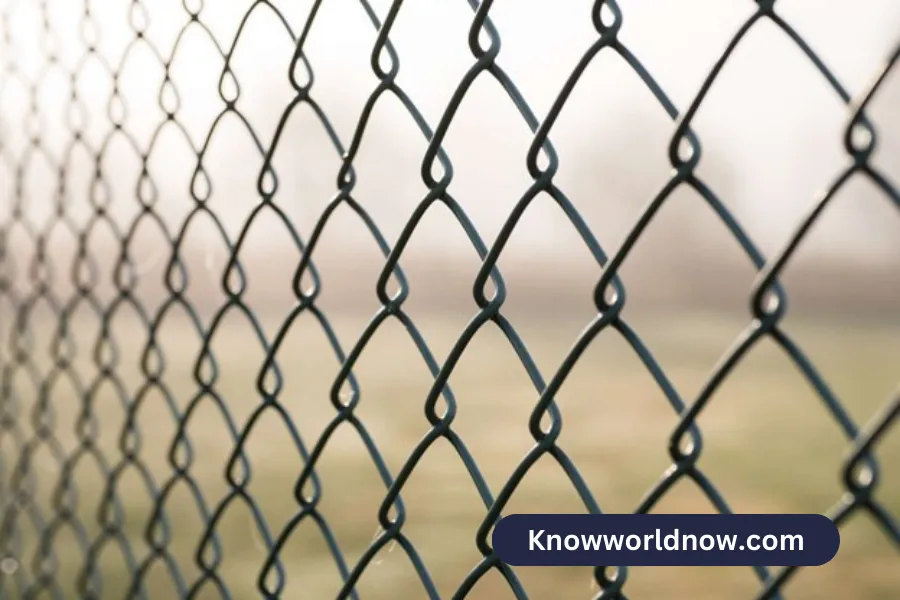Wire fencing is a versatile and widely used fencing option that offers various benefits for residential, commercial, and agricultural properties. With its durability, affordability, and functionality, wire fencing has become a popular choice among property owners.
This comprehensive guide will provide an in-depth overview of wire fencing, including different types, their applications, and step-by-step installation methods, empowering you to make informed decisions when considering wire fencing for your property.
Types of Wire Fencing
Wire fencing comes in several types, each with its unique characteristics and applications. Understanding the different types will help you choose the most suitable option for your specific needs.
Chain-Link Fencing
Chain-link fencing is a widely recognized type of wire fencing known for its affordability, durability, and versatility. It consists of interwoven steel wires, creating a diamond-shaped pattern. Chain-link fences are commonly used for residential properties, sports fields, commercial areas, and industrial facilities.
Welded Wire Fencing
Welded wire fencing is made by welding horizontal and vertical wires together, creating a grid-like pattern. This type of wire fencing offers strength, rigidity, and durability, making it ideal for securing livestock, gardens, and perimeters that require higher security.
Woven Wire Fencing
Woven wire fencing, also known as woven mesh fencing, features closely spaced horizontal and vertical wires that are woven together. This type of wire fencing is commonly used for animal enclosures, such as poultry, rabbits, and small livestock. Woven wire fencing offers excellent containment and protection while allowing visibility.
Electric Fencing
Electric fencing incorporates wires that deliver electric shocks when touched. It is an effective solution for containing livestock, deterring wildlife, and enhancing security. Electric fences are commonly used in agricultural and rural areas.
Applications of Wire Fencing
Wire fencing serves a wide range of applications across different settings. Understanding the various uses will help you determine how wire fencing can benefit your property.
Perimeter Security
Wire fencing provides a secure and visible barrier for property boundaries, deterring intruders and enhancing security. It is commonly used for residential, commercial, and industrial properties.
Animal Containment
Wire fencing is widely used to contain and protect animals, including pets, livestock, and poultry. It creates secure enclosures and prevents animals from wandering off or being exposed to potential dangers.
Garden Protection
Wire fencing serves as a barrier to protect gardens and crops from wildlife, pests, and unwanted foot traffic. It helps maintain the integrity of gardens and promotes plant growth.
Sports Facilities
Chain-link wire fencing is often used in sports facilities to delineate boundaries and ensure player safety. It is commonly seen in baseball fields, tennis courts, and soccer fields.
Installation of Wire Fencing
Proper installation is crucial for the effectiveness and longevity of wire fencing. Here are the general steps involved in installing wire fencing:
Planning and Preparation
Determine the layout and measurements of your fence line. Clear the area of any obstructions, mark the boundary, and ensure you have all the necessary tools and materials.
Setting the Posts
Dig holes for the fence posts, ensuring they are deep enough for stability. Place the posts at the appropriate intervals and secure them with concrete or gravel.
Attaching the Wire
Unroll the wire fencing along the fence line, attaching it to the posts using appropriate fasteners, such as clips or hog rings. Ensure the wire is stretched tightly and secured properly.
Adding Gates and Accessories
If needed, install gates at entry points using gate hardware. Consider adding accessories like tension wire, tension bands, and top rails to enhance the stability and functionality of the fence.
Securing and Finishing
Inspect the entire fence line to ensure all connections are secure. Use additional fasteners or ties as needed. Trim any excess wire and make sure the bottom of the fence is properly secured to the ground to prevent animals from squeezing underneath.
Maintenance and Upkeep
Regularly inspect your wire fence for any damage or signs of wear. Repair or replace any damaged sections promptly to maintain its effectiveness. Keep vegetation trimmed around the fence to prevent overgrowth from compromising its integrity.
Conclusion
Wire fencing offers a versatile, durable, and cost-effective solution for various applications, including perimeter security, animal containment, garden protection, and sports facilities.
Understanding the different types of wire fencing available and their respective uses will help you choose the most suitable option for your specific needs.
Additionally, following proper installation techniques, including planning, setting posts, attaching the wire, and adding gates and accessories, ensures a secure and long-lasting fence.
Regular maintenance and upkeep are essential to preserve the integrity of your wire fence and maximize its effectiveness over time. By utilizing this comprehensive guide, you can confidently select, install, and maintain wire fencing to meet your property’s requirements and enjoy the benefits it provides.




